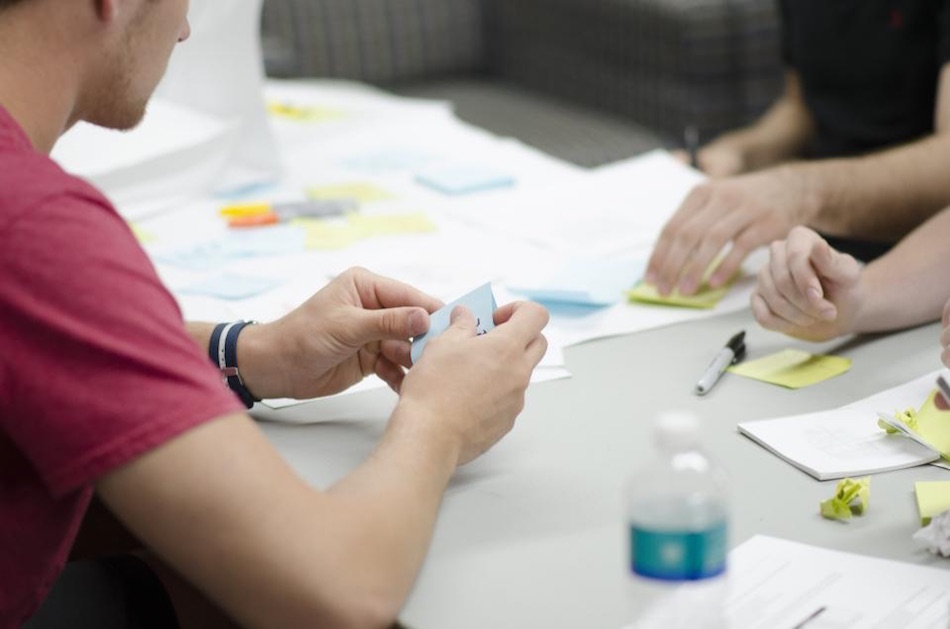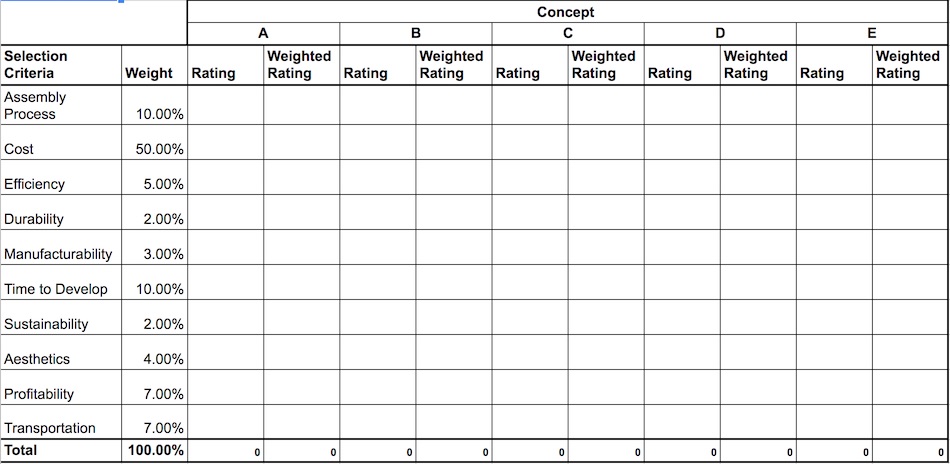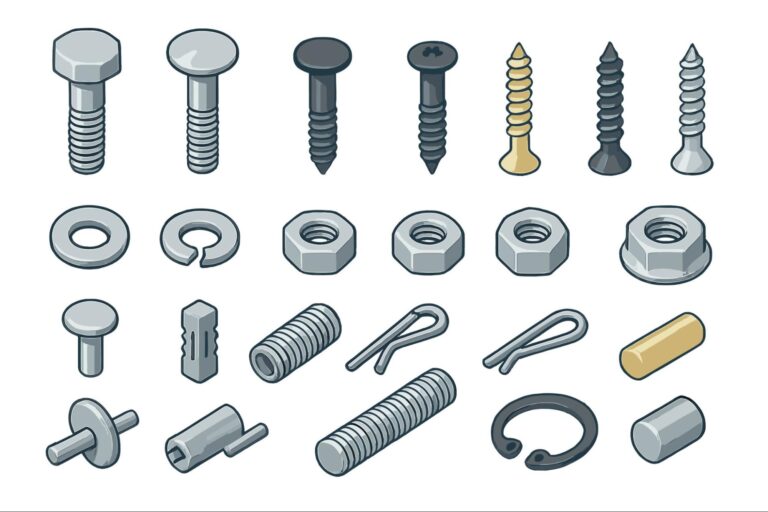Time to read: 5 min
This article was written by Olivia Eaton, Product Design Engineer at Verily Life Sciences , and Kassidy MacPhail, Product Development Engineer at Neptune Medical, when they were part of Generate at Northeastern University.
Great ideas form through critical observations of everyday things and by envisioning potential improvements to the mundane. While it’s easy to assume visionaries easily create cutting-edge technology, the most successful technological advancements come through small, incremental innovations that lead us into the future. For example, Uber and Lyft offer an immediate, electronic alternative to hailing a cab. The technology they created isn’t revolutionary, but they’ve become widely used. So, how can you take a problem or frustration that you experience in everyday life and turn your ideas for how to fix it into a money-making product?
Understanding and Researching your Problem
Engineers build solutions to problems, so what happens if we don’t spend the right amount of time understanding the problem? The wrong solution gets built. Here’s how we go about understanding the problem we want to address:
- What is your problem statement?
- Can you summarize it in one or two sentences?
- How big is the problem?
- How many people can benefit from a solution?
- How annoying is the problem?
- How badly do people desire a solution?
- Do any other solutions exist?
- How effective are they in solving your problem?
The above questions do not need to be completely nailed down from the start, but they are absolutely necessary to consider. Answering these questions should begin providing some scope and direction for the rest of the process.
Do your research, and never engineer something that has already been engineered (although it can be an effective use of time to piggyback off the work of others). What current technologies can be retrofitted to help you toward your solution?
In the event that you find an existing, functional solution, which is very likely, think about how you can improve upon the existing design choices. How can you solve the problem better? How can you leverage their solution toward your problem?
Asking these types of questions and doing your research should help guide you toward initial ideas of how to solve the problem you’ve identified as important. Furthermore, extensive research is necessary to ensure your solution and business model will provide something unique to the marketplace.

Ideation and Brainstorming
Once the problem is thoroughly understood, ideation and brainstorming can begin. There are infinite brainstorming strategies that you can follow, so don’t feel constrained by methods you’ve used in the past or the ones we suggest. The more approaches to ideation you take, the more opportunities you have to come up with a wide range of ideas. The following three exercises are processes that we find particularly effective.
The Five-Minute Brainstorm
Set a timer for five minutes and draw as many pictures or words on sticky notes of ways to solve this problem, with no given constraints. These pictures can be very simple or abstract but should somehow relate back to the problem you are trying to solve. Sketches should include ideas that are based in both fantasy and reality. This method is meant to bring all potential ideas onto the table for consideration. The most ridiculous solutions can inspire more realistic ideas. After the five minutes are up, group the sketches into categories. These categories should be broad enough to allow every idea to fit somewhere and will give you an overview of all the directions from which you can approach the problem.

Starbursting
Think of as many questions as possible about the problem, without answering any of them.
Here are a few examples:
- What is the easiest for this to fail?
- Who would the early adopters be?
- Who wouldn’t care about this problem?
- Has this problem changed over the years?
- What might this problem look like in the future?
This method is similar to the Five-Minute Brainstorm method, in that it is meant to unleash all potential ideas, without filtration. Don’t disregard any question, no matter how broad or specific. Once the questions are written, go through and attempt to address them all, to whatever degree possible.
Solve the Opposite
It’s often helpful to brainstorm solutions to the exact opposite problem you are attempting to solve. Attempting this perspective shift can facilitate a deeper understanding of the problem.
After using these brainstorming methods to come up with a multitude of possible ideas, it’s essential to go through an equally rigorous process when denying ideas as you did when formulating ideas. At times, the process may seem repetitive, but it’s often difficult to determine which idea is the most effective in an objective manner.
Filtering your Ideas – Concept Scoring
Concept scoring is a method through which ideas can be compared in a quantitative manner. It is not, however, a method to determine which single idea is the best. The final decision should not be chosen through this exercise, but rather by understanding what the rankings imply about your ideas.
Our suggested method to help whittle down the number of ideas is a concept scoring chart. This process provides a path to eliminating ideas that are objectively the least effective. To begin, think of all the important aspects that your design must contain. These are categorical criteria. For example, your solution might need to be cost-effective, manufacturable, safe to use, and maintainable. Try to choose no more than eight criteria. The criteria are listed vertically on the leftmost column of the chart.

Once the criteria are listed, they can be ranked. Give each criteria a ranking of importance, each rank being a percentage of 100. If cost is the most important factor of your design, and eco-friendliness is the least important, they may get ranked 40% and 5%, respectively. This step is not crucial if all factors are the same significance; however, it can help differentiate your ideas a little more.
Next, go through each idea and give it a score of 0-5 in each category (0 = does not satisfy the criteria, 5 = completely satisfies the criteria). Then multiply the score by the weight of that category to get that idea’s score. Lastly, add up each idea’s score in each category to get the total score for each idea.
Although this process may seem to give a clear idea of which idea is the most useful, do not automatically jump to the idea with the highest score. While this process is a great indicator of low-ranking ideas, it can’t function as the sole determining factor of the single best idea. That decision requires consideration of context.
Now comes the hard part: choosing which idea, or ideas, to carry through beyond the concept phase. Obviously, it’s not feasible to prototype every idea, so some ideas must be eliminated. Choose the top two to three ideas, based on their score from the concept table, interest level, and your own gut reaction. These ideas should serve as starting points for prototyping.
Main Takeaways
In reality, there will be many factors that push you toward one idea or away from another when working through the design process. These steps of idea generation, screening, and making careful choices are building blocks to help guide you through the process of product development. The process is dynamic and truly depends on the ultimate goals of your problem statement. Our suggested process begins with background research and the development of the official problem statement, is followed by several brainstorming sessions, and concludes with a concept ranking exercise. This article should function as a dynamic guide to idea generation that enables designers to enter the prototyping phase.










